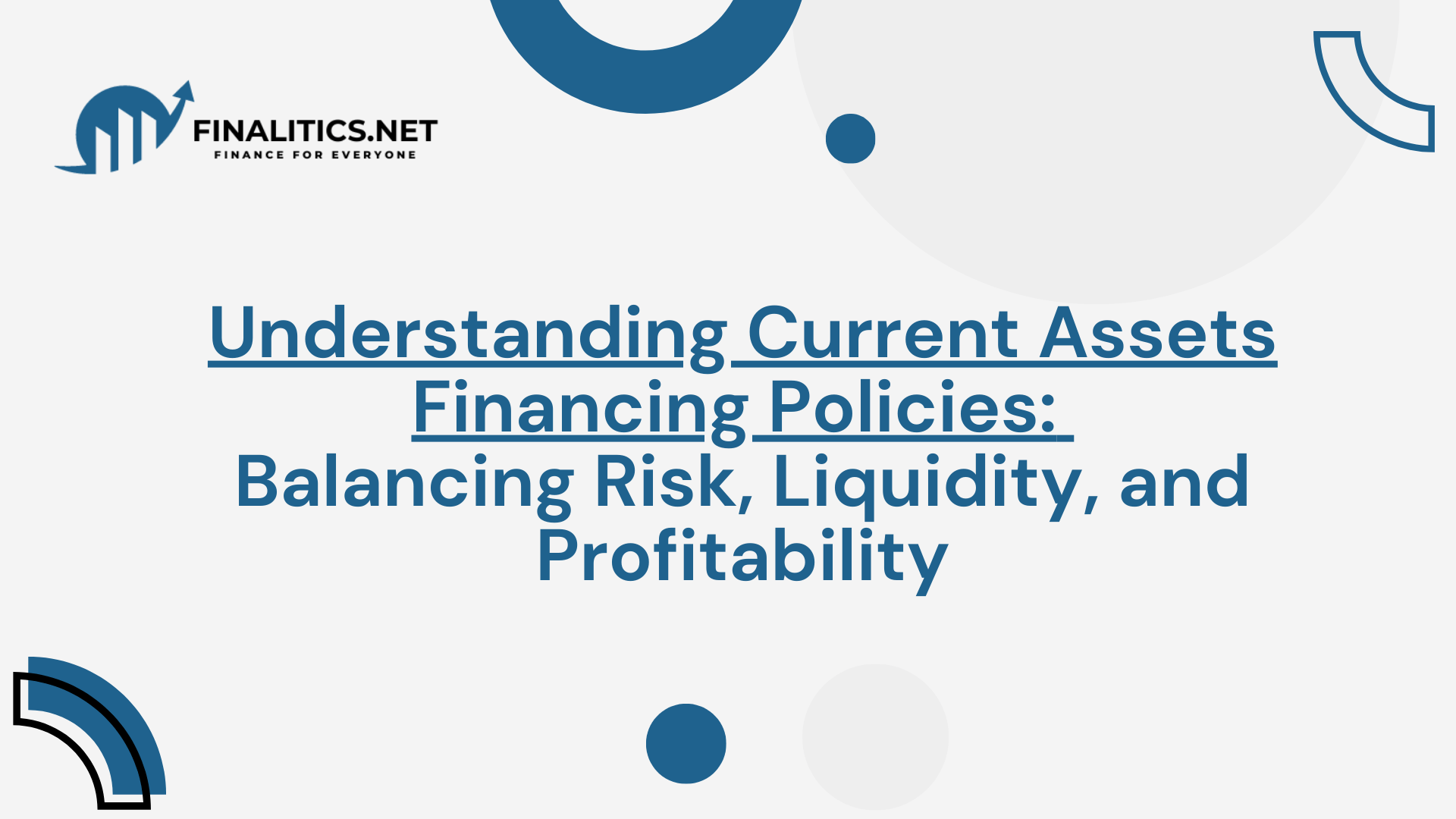In this article, I will explore the key current assets financing policies businesses must consider when managing their assets. Understanding these strategies is crucial for maintaining optimal liquidity, minimizing risks, and enhancing profitability.
One key consideration in managing a business is financing current assets. These assets, such as cash, accounts receivable, and inventory, are vital in maintaining a company’s liquidity and day-to-day operations. Companies often face fluctuations in current assets, influenced by seasonal demands or changes in the economic cycle.
Depending on the financial strategy, businesses can choose from three main financing policies: the maturity matching (or moderate) approach, the aggressive approach, and the conservative approach. Each of these methods carries its own set of risks, benefits, and implications for a company’s liquidity, profitability, and financial stability.
How can you define current assets financing policies?
In terms of current assets financing policies, companies need to consider two types of assets and these are:
1. Permanent current assets: Permanent current assets are the assets that every firm must carry even at the trough of its cycle. These types of current assets are always needed and mandatory for the business to survive and for its day-to-day operations. These include cash & cash equivalents, inventories, and many more.
2. Temporary current assets: Temporary current assets are the assets that are not mandatory for the business to survive or its day-to-day operations. These types of assets are mainly for seasonal productions and they fluctuate with seasonal or cyclical variations in sales. For example, ice cream production always fluctuates depending on winter and summer.
The manner in which these two types of current assets are financed is termed as current assets financing policy. Current assets financing policy deals with strategies a company uses to finance its current assets.
Now that you have understood what is current assets financing policy, let’s talk about the three primary categories of current assets financing policies:
1. Maturity Matching Approach
The maturity matching approach, also known as the self-liquidating approach, aims to align the maturity of assets with the maturity of liabilities. In this method, a business finances its fixed assets and permanent level of current assets with long-term funds, while temporary current assets are covered by short-term debt.

For example, Imagine a clothing retailer that experiences higher demand in the summer. To meet this temporary spike, the retailer increases its inventory. Using the maturity matching approach, it would use short-term credit (like a 3-month bank loan) to fund this inventory, aligning the financing with the expected sales period. On the other hand, its permanent stock and fixed assets would be financed with long-term loans or equity.
Benefits and Drawbacks:
- Benefits: This approach reduces the risks associated with mismatching maturities, ensuring that cash flows from asset sales can meet debt obligations as they come due.
- Drawbacks: The approach may not work perfectly because asset lives are uncertain, and common equity (which has no maturity) must still be part of the financing mix. Additionally, if sales are slower than expected, the company may face difficulties in repaying short-term loans.
2. Aggressive Approach
In the aggressive approach, a company finances a portion of its permanent current assets with short-term debt and sometimes a portion with long-term debt, depending on the situation of the business. This policy is riskier but can also be more profitable since short-term interest rates are typically lower than long-term rates. The aggressive strategy is often adopted when a firm seeks to minimize interest costs and maximize returns.

Example: Consider a tech company that needs a significant amount of working capital to sustain its growth. Under the aggressive approach, the company might use short-term loans to finance both its temporary and -permanent current assets. While this reduces the overall cost of capital, it also increases the risk. For instance, if the tech company borrows $1 million to purchase long-term equipment but only secures a 1-year loan, it must rely on loan renewal for the next year. If market conditions change, the lender might not renew the loan, putting the company at risk of a liquidity crisis.\
Benefits and Drawbacks:
- Benefits: This approach can boost profitability during periods of stable economic growth, as short-term borrowing is often cheaper than long-term options.
- Drawbacks: The aggressive approach increases financial risk. If a company faces a sudden downturn or a credit crunch, it may struggle to roll over short-term debt, leading to potential liquidity issues or even bankruptcy.
3. Conservative Approach
The conservative approach is the opposite of the aggressive strategy. It involves using long-term funds to finance all fixed assets, permanent current assets, and even a portion of temporary current assets. In this method, companies maintain a cushion of liquidity by holding marketable securities, which can be sold off during peak periods to meet short-term needs. This strategy prioritizes financial stability and minimizes risks associated with short-term borrowing.

Example: A utility company, known for its stable demand, might choose a conservative approach to financing. It maintains sufficient long-term funds to cover its fixed assets and most of its current assets, even during seasonal peaks. When short-term needs arise, it can sell marketable securities instead of seeking short-term loans, avoiding risks like sudden interest rate hikes or difficulties in debt renewal.
Benefits and Drawbacks:
- Benefits: This approach offers greater financial security, with fewer risks of liquidity issues since long-term funds are less subject to sudden changes in interest rates or credit availability.
- Drawbacks: The conservative strategy may result in higher overall financing costs since long-term debt generally carries higher interest rates. It can also lead to excess liquidity, reducing the potential for higher returns.
Choosing the Right Financing Policy
The choice of current assets financing policy depends on a variety of factors, including the firm’s risk tolerance, market conditions, and strategic goals. Generally, businesses must balance the benefits of lower interest costs with the risks associated with liquidity constraints. Here are a few considerations:
- Interest Rate Outlook: If short-term rates are expected to rise, a conservative approach may be preferable. If rates are low and stable, the aggressive approach might be more attractive.
- Company’s Risk Tolerance: Risk-averse firms tend to lean toward the conservative approach, prioritizing long-term financing and liquidity. More risk-tolerant firms may choose the aggressive approach to enhance profitability.
- Economic Conditions: During stable economic periods, companies might take on more short-term debt to benefit from lower interest rates. In uncertain times, a more conservative strategy could help ensure business continuity.
Conclusion
Current assets financing policies are crucial for maintaining a firm’s financial health and operational efficiency. While the maturity matching approach offers a balanced strategy, the aggressive approach can enhance profitability, albeit with greater risk.
Meanwhile, the conservative approach prioritizes financial stability, suitable for businesses with lower risk tolerance. Ultimately, the decision rests on a careful assessment of the firm’s specific needs, market conditions, and management’s risk appetite. Adopting the right policy can make a significant difference in a company’s liquidity, profitability, and resilience during economic fluctuations.



